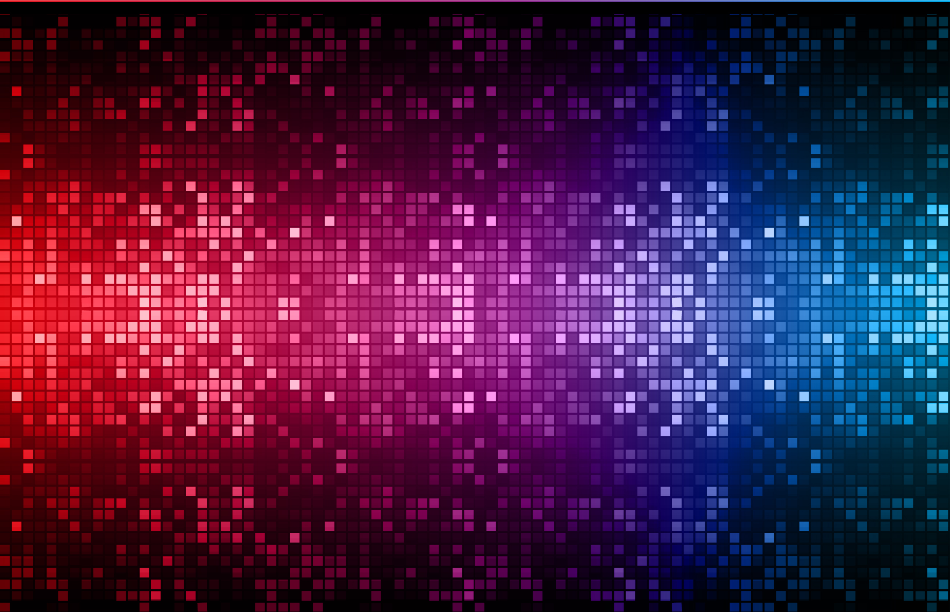CRAIC Technologies is the worlds leading developer of UV-visible-NIR range scientific instruments for microanalysis. These include the QDI series UV-visible-NIR microspectrophotometer instruments designed to help you non-destructively measure the optical properties of microscopic samples. CRAIC's UVM series microscopes cover the UV, visible and NIR range and help you analyze with sub-micron resolutions far beyond the visible range. CRAIC Technologies also has the CTR series Raman microspectrometer for non-destructive analysis of microscopic samples. And don't forget that CRAIC proudly backs our microspectrometer and microscope products with unmatched service and support.

Image Credit: Shutterstock/Titima Ongkantong
Flat Panel Displays and Monitors
Flat panel monitors, for the most part based upon liquid crystal displays, have exploded upon the worlds market in the last few years. Flat panels consist of a light source layered by a color mask. The color mask is used to generate color on the screen and consists of red, blue and green pixels. Until the advent of microspectrometers, quantitative quality control of individual pixels was impossible. However, microspectrophotometers are able to analyze sub-micron areas within a pixel. With these instruments it is now possible to investigate variations not only from pixel to pixel but also variations that are found within each pixel. This greatly improves the level and detail of quality control that is possible for color masks.
Examination Pixel-to-Pixel Variations Using Microspectral Analysis
In this paper, we will explore pixel-to-pixel variations of color masks by transmission microspectral analysis. This paper will show that there are variations between individual red pixels, green pixels and blue pixels. Overall, these variations are not great but there do exist some outlying results, which are due to defects in manufacturing or damage to the color mask. These defects are not visible to the naked eye, even under a microscope, and can effect the quality of color from a flat panel monitor. However, such minor color variations can only be quantified by a microspectrophotometer.
Experimental
Ten red, ten green and ten blue pixels of a color mask were compared with one another. No preparation was required for their analysis. All analytical techniques described in this paper are non-destructive and very easy to use.
The instrument used for the analysis was a QDI 202™ UV-visible-NIR microscope spectrophotometer from CRAIC Technologies, Altadena, California. See Figure 1. This instrument has a spectral range of 350 to 900 nm. In all cases 50 scans were averaged. The instrumental calibration was checked with NIST traceable microspectrophotometer standards, which are also a product of CRAIC Technologies, Altadena, California.
.jpg)
Figure 1. QDI 202™ Microscope Spectrophotometer.
Results
The mask consisted of red, blue and green pixels. The pixel mask was sealed between glass sheets so that the entire structure could be analyzed by transmission microspectroscopy from the near UV, visible and NIR. See Figure 2.
.jpg)
Figure 2. Red blue and green pixels of color mask analyzed. The black square in the center is the QDI 202 microscope spectrophotometer aperture.
Analysis of Red Pixels by Transmission Microspectroscopy
The red pixels were the first series analyzed from 350 to 900 nm. See Figure 3. The center 10x10 micron area of each pixel was analyzed in transmission mode. The black square in the center of each picture is the microspectrophotometer aperture. The area under the aperture is what is spectrally analyzed. The red pixel absorbs all light in the UV, blue, and green regions while transmitting in the red and near IR regions. There was subtle variations in the red region of each pixel’s spectra which would result in variations in the red pixels hues in a monitor.
.jpg)
Figure 3. Transmission microspectra of ten red pixels selected at random.
Analysis of Blue Pixels by Transmission Microspectroscopy
The next series of spectra were from the blue pixels. Again, the center 10x10 area of 10 different pixels was analyzed and compared. As can be seen, there is a strong transmission centered at 464 nm. As shown, this pixel transmits almost all blue light from 400 to 500 nm while allowing nearly none of the rest of the visible range. Of the ten pixels analyzed, there were only minor variations in the overall intensity of the strongest peaks. This would not actually affect the color of the pixel itself all that much. Also note that the optical density of these pixels is much higher than the reds or greens but that the instrument can easily resolve the spectra due to its superior dynamic range.
.jpg)
Figure 4. Transmission microspectra of ten blue pixels selected at random.
Analysis of Green Pixels by Transmission Microspectroscopy
The final series of spectra were of the green pixels. The same sampling procedures were applied to 10 different green pixels. The comparisons show variation in colorant concentration and this would affect how it appeared visually. Using this mask would lead to variations in the greens and yellows on any display.
.jpg)
Figure 5. Transmission microspectra of ten green pixels selected at random.
Conclusions
Sometimes it is very difficult to study and differentiate the subtle differences in the pixels used in color masks by the naked eye or by video based techniques. Determination of color differences by these methods are subject to many experimental variables which include the physical condition of the examiner, lighting, mounting media, optics, etc. In addition, an examiner will not detect subtle changes in color or additional peaks. The microspectrophotometer removes many of these variables from its measurements in addition to providing a much higher level of discriminatory power. In addition, this method allows for comparisons of color variations within the pixel itself.
The purpose of this paper is to show the transmission spectral characteristics found in flat panel color masks. As shown here, the reproducibility from the pixel to pixel is quite high when the center 10x10 microns are sampled but the microscope spectrophotometer is still able to detect pixel-to-pixel variations.
Primary author: Dr. Paul Martin
Source: Quality Control of Color Masks of Flat Panel Displays by Transmission Microspectroscopy by CRAIC Technologies.

This information has been sourced, reviewed and adapted from materials provided by CRAIC Technologies.
For more information on this source, please visit CRAIC Technologies.